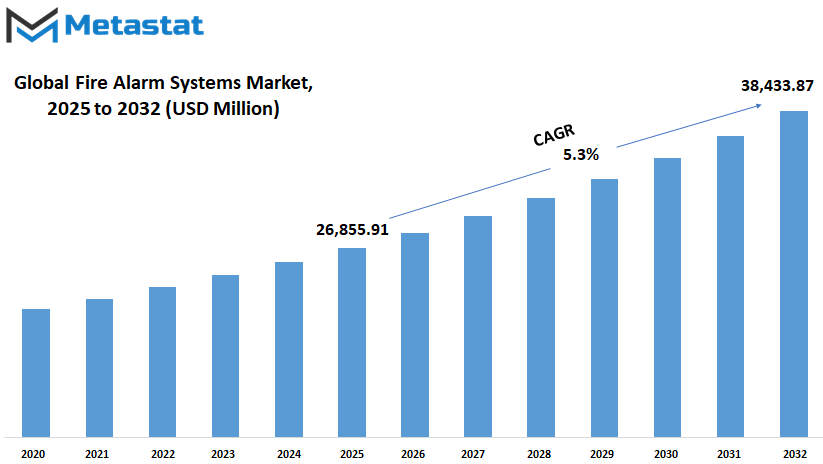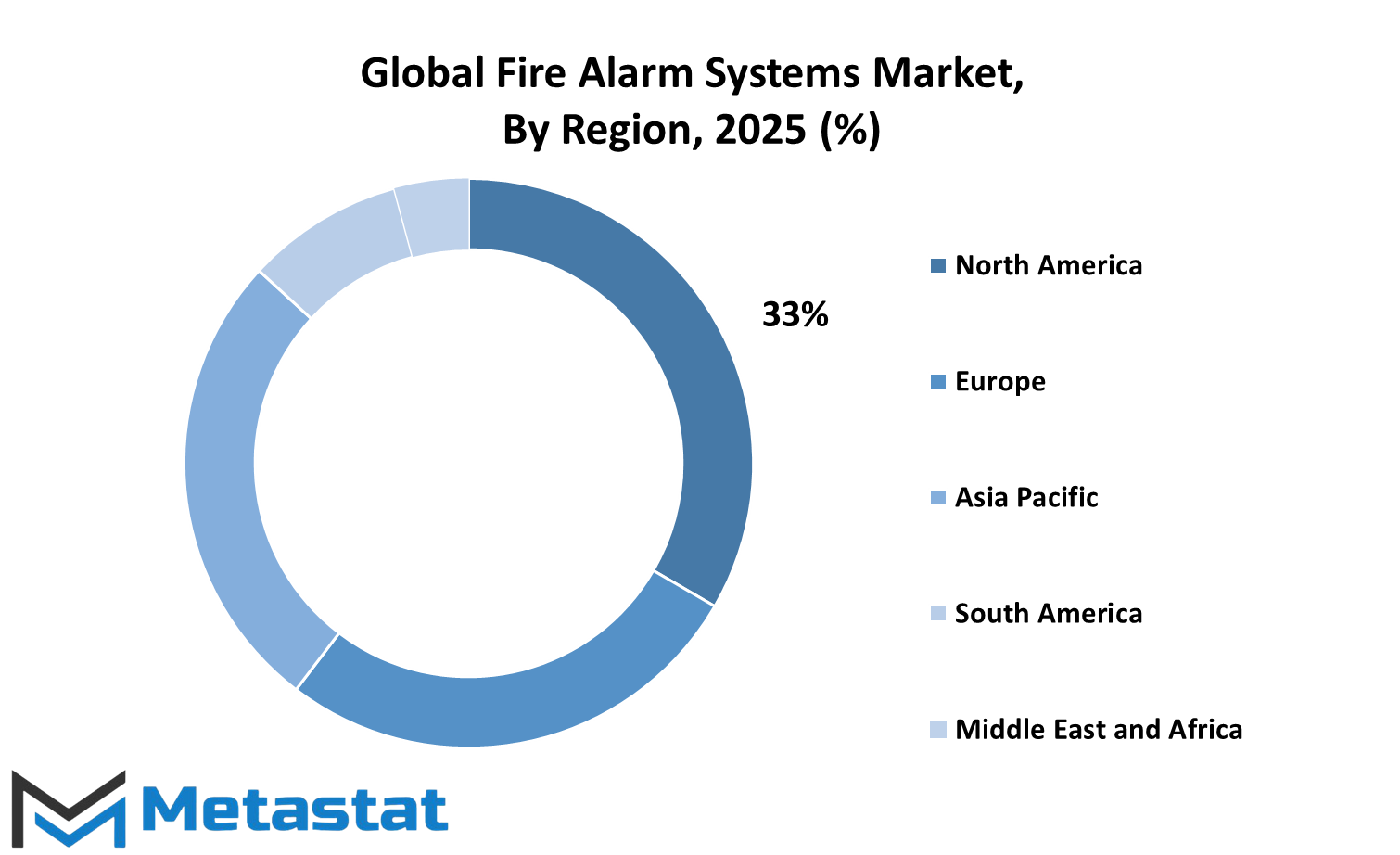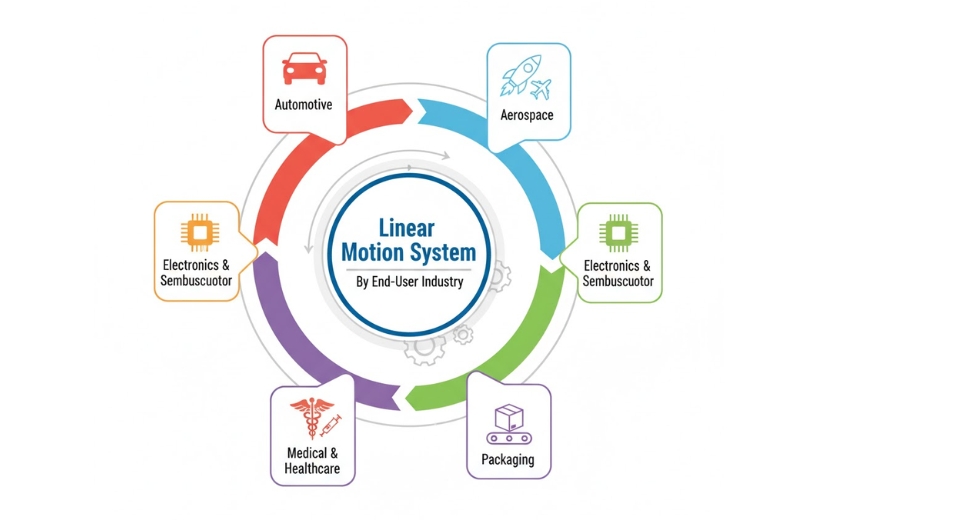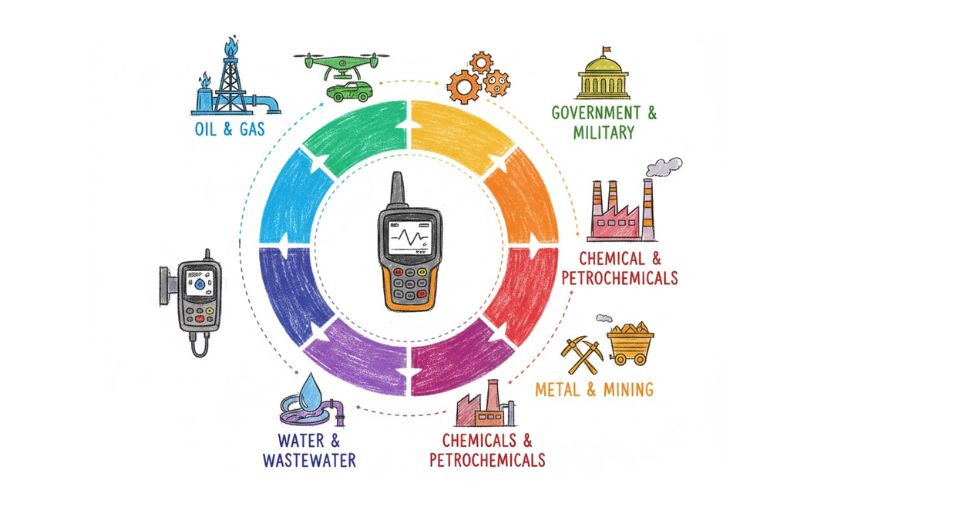MARKET OVERVIEW
The Global Fire Alarm Systems market performs the task of safeguarding people’s lives and property. By giving advanced notification about possible hazards from fires, it involves multiple technologies and solutions designed for environmental smoke detection and heat/carbon monoxide-based solutions that identify the early emergence of any signs of potential fires and prompt a signal with a raised alarm when it gets some information from various sensing methods of these alarming conditions. With the increasing demand for safety and regulatory compliance across various sectors, the need for effective fire alarm systems will continue to rise globally.
The market for fire alarm systems is set to evolve as technological advancements reshape the way fire detection is handled. The emergence of smart fire alarms, which integrate with home automation and building management systems, will significantly alter the landscape. These modern fire alarms can connect to smartphones or central monitoring stations, allowing for real-time notifications and responses. Such capabilities will become more widespread, particularly in residential, commercial, and industrial settings, as the need for rapid responses to potential threats becomes more pressing.
The Global Fire Alarm Systems market covers several segments, including residential, commercial, industrial, and institutional applications. Each of these sectors brings with it a different set of challenges and needs for fire safety solutions. The advanced fire detection technologies will see more widespread acceptance in residential structures, especially in high-density urban environments. For commercial use, the requirement for fire alarm systems will be due to the laws and increasing interest in the protection of employees’ workplace. Industrial applications will necessitate highly sophisticated systems, which are designed to identify particular fire categories or threats, such as chemical or electrical fires, that demand very targeted and specific solutions. Institutional applications, including hospitals, schools, and government buildings, will also demand sophisticated fire alarm systems that are safety as well as regulatory compliant.
Regulations and standards will be the driving force behind the fire alarm system market. Governments and international organizations would enforce stringent norms of fire safety, which the businesses and private individuals would invest in fire detection and alarm technology. The advancements in fire safety laws will mandate businesses to shift their systems, ensuring compliance along with protecting all assets and people. The market will then experience a raised demand for a more integrated set of systems-a combination of alarms with fire plus other safety factors like sprinklers and emergency light systems, combining to provide full coverage in fighting fire risks.
The future design of fire alarms will be primarily influenced by such technological innovations with AI and machine learning being an integral part and used to minimize false alarms even as the true detection is highly enhanced. Such integrated technology between AI and fire alarms is bound to present more intelligent and adaptive solutions. Moreover, they would result in lesser involvement in the physical operations and ensure smoothness as such demands may require an adaptation and upgrade over a period with changed building designs that create advanced fires. Most especially, IoT would make the alarm fire devices intercommunicate other smart devices inside a building without causing disruptions for improved overall safety protocols.
Expansion in the global fire alarm system market is assured as a result of new developments in technology, awareness in regards to safety and regulation of their use. With an increased demand for more reliable and efficient fire detection systems, the market will have to evolve in line with these demands and will continue to find ways to innovate, creating smarter, more responsive, and easier-to-integrate solutions. Future fire alarm systems will protect not only lives and property but will be integral components of the wider framework of smart buildings and cities.
Global Fire Alarm Systems market is estimated to reach $38,433.87 Million by 2032; growing at a CAGR of 5.3% from 2025 to 2032.

GROWTH FACTORS
The global fire alarm systems market experienced steady growth over the past few years, driven by a range of factors showing increased interest in safety and security. Among the chief reasons attributed to this growth is the increasing importance laid on building safety regulations and compliance standards. The safety requirements for all types of residential and commercial structures continue to be updated by governments and regulatory authorities. With all these regulations to ensure that there are fire safety systems in place and functioning appropriately, the chances of accidents in case of a fire are also reduced. And therefore, in order to ensure compliance, demand for reliable, advanced fire alarm systems is at an all-time high.
One of the factors driving the global fire alarm systems market is rising awareness about fire safety. People are becoming more aware of the dangers of fire hazards in both residential and commercial environments. As fires can have devastating effects on lives and properties, individuals and organizations are increasingly investing in fire alarm systems as part of their proactive safety measures. In residential areas, fire alarm systems provide an added layer of protection, giving families peace of mind. These systems play a crucial role in the commercial and industrial sectors. They are inevitable for preventing potential disasters that might lead to some kinds of financial losses and effects on employees.
Despite the promising growth prospects of the fire alarm systems market, there are some challenges that may impede further development within this market. One of the considerable challenges is higher installation and maintenance costs associated with advanced fire alarm systems. The more advanced the system, the more it would be expensive, with features such as smoke detection, heat sensors, and integrated alerts. Moreover, maintenance and updates of the system are expensive, which deters some businesses and homeowners from upgrading their fire alarm systems.
Another challenge may be found in the difficulty of integrating new fire alarm systems with existing infrastructures. Many buildings, such as the older ones, will lack the appropriate infrastructure needed for the state-of-the-art fire alarm technologies. A retrofitting process may take a lot of time and money to put modern fire alarm systems into building structures, making property owners less willing to take their places.
Despite these challenges, the global market for fire alarm systems is set to gain due to the adoption of smart fire alarm systems. Smart fire alarm systems are highly integrated with Internet of Things technology and offer real-time monitoring as well as higher safety features. These systems ensure immediate notifications and updates in the event of a fire, even if the person is not in the building at the time. These smart fire alarm systems will be accessible as IoT keeps evolving, giving great opportunities for growth in the market.
Looking forward, the global market for fire alarm systems will probably keep growing further in the near future due to growing demand for higher fire safety across residential and commercial sectors. Advancements in technology will further push the growth of more sophisticated, yet cheaper, fire alarm systems that will ensure better protection, as safety needs are evolved and changed with changing times.
MARKET SEGMENTATION
By Technology
The Global Fire Alarm Systems market is critical to the safety of people and the prevention of loss of lives and property attributable to fire hazards. The advancing technology comes about with new innovation that makes fire detection proficient, reliable, and accurate, thereby developing the market in line with the new solution being embraced. An integral part of this development is the change in design and operation regarding fire alarm systems. Currently, the market is divided into different categories depending on technology. However, the two main types include Conventional Fire Alarm Systems and Addressable Fire Alarm Systems.
The traditional conventional fire alarm system has been a favorite in terms of fire detection. These are especially popular for small buildings or areas where an elementary alarm system is all that is required. In such a system, the building is divided into zones and each zone monitored for any fire hazards. The system, once detecting a fire, sounds an alarm throughout the zone. Though these systems work well in specific situations, they may not have the required accuracy and adaptability that today’s buildings need. This is where Addressable Fire Alarm Systems come in. These systems have much more advanced features and can call for the exact fire location within a building, which will lead to prompt responses and take lesser time reaching the danger point.
Future prediction for Global Fire Alarm Systems addresses demand for Addressable Fire Alarm Systems. As buildings become more and more complex and larger in size, the need for sophisticated technology becomes apparent. Addressable systems will be a major part of better management of fire safety, especially in large commercial buildings, skyscrapers, and industrial areas. They are easy to integrate with other safety systems, such as security and building management, which makes them ideal for environments where comprehensive monitoring is essential.
The adoption of Addressable Fire Alarm Systems will increase with newer technologies such as wireless communication, sensors, and the Internet of Things (IoT) into these systems. These will include real-time monitoring, remote alerts, and automatic responses, all of which are expected to further enhance fire detection. As fire alarm systems become more intelligent, this will help detect not only fires but also send out any critical information in time to speed up evacuation and minimize property damage.
The Global Fire Alarm Systems market is bound to keep evolving, keeping a keen focus on the technology that promises to deliver greater accuracy, reliability, and integration with other safety systems. Advanced Addressable Fire Alarm Systems will take center stage as this evolution happens.
By Type
The global fire alarm systems market has seen tremendous growth over the past few years and is expected to keep evolving with improving safety standards across industries. Fire alarm systems protect lives and property by detecting fires at an early stage, allowing people to evacuate and minimizing damage. The market is segmented into different kinds of fire alarm systems that can be chosen for specific requirements. Based on the type, it can be further divided into four categories, including manual call-point alarms, heat detectors, visual alarms, and audible alarms.
Manual call-point alarms are among the oldest fire alarm systems. These systems operate based on the intervention of human beings in a situation of fire by the triggering of a button. Even though modern automated systems have been highly emphasized, there is still a place for manual call-point alarms, especially in areas where instant action is required or other detection systems might not be effective.
With technology progressing, it may also have new developments for the manual call-point system, improving its functionality and making it more intuitive and efficient for emergency situations.
Another crucial part of the fire alarm systems market is the heat detectors. These devices detect changes in environmental temperature and buzz an alarm when that temperature exceeds a specific level; this means there may be a fire situation. Heat detectors are effective, especially where smoke detectors are less reliable, such as in kitchens or industrial situations. In the future, these likely heat detectors will be more advanced to identify the difference between a false alarm and a real fire condition.
Visual alarms have become popular today, especially when the environment calls for silent-type alerts. That is, some environments may have too much noise, like industries, or might have people suffering from hearing losses. They serve to alert someone of a probable fire through a flashing light effect. With increased demand for inclusive safety solutions, the visual alarm system will most probably be developed into more advanced types, integrating adaptive lighting features according to different environments and ensuring timely alerts to everybody in case of a fire.
Audible alarms are the most common type of fire alarm that produces loud sounds to alert the people to evacuate. These alarms are generally utilized along with other systems, such as heat detectors and visual alarms, to ensure maximum safety. In the future, audible alarms can be more fine-tuned, with the ability to emit different sounds based on the severity of the fire or the location of the incident, improving their effectiveness in large buildings or complex facilities.
The global fire alarm systems market is likely to undergo changes with increased efficiency and usability as a result of technological advances. With all the above options being integrated- manual call-point alarms, heat detectors, visual alarms, and audible alarms-will provide full-scale fire protection for people and property across the globe.
By Application
The Global Fire Alarm Systems market is critical, as it covers safety in diversified environments. Considering the increasing problem of fire safety, the sales of fire alarms are increasing further, and so will be, in the long run. They are crucial devices for early detections, alert people to potential risks, and further allow them time to take a proper action for safety. These systems are implemented in a multitude of applications. Their importance never came more forth than it is now.
Its future will shape the market around its use areas. The sector that will mostly grow will continue to be that of the commercial sector. That is because towns expand and many commercial buildings develop, which translates to a continuous growth in a need for an efficient fire alarm system. Many of these buildings accommodate huge populations, so safety would be a primary consideration. Some other advanced technologies which are expected to take hold here include smart fire alarm systems, which would also be integrated into other building management systems, enabling more efficient detection and response capabilities. In addition, as buildings become smarter and more connected, fire alarms will be part of a more comprehensive safety ecosystem, ensuring quicker and more accurate responses to emergencies.
In the industrial sector, fire alarm systems will also gain more importance as industries seek to protect their workforce and expensive equipment. Industrial environments are usually at a higher risk of fires due to hazardous materials, machinery, and high temperatures. Fire alarm systems for these places will thus become more specialized and advanced. Demand for fire alarms in industrial areas will probably increase as companies will invest more in fire prevention and mitigation technologies. These systems will not only detect fires but can also have control over the spread of fire, which will help in increasing safety and reducing damage.
Further on residential, as the population keeps growing and urbanizing, fire alarm systems demand will grow significantly. There would be a greater installation demand for new housing developments, while existing buildings will have to improve their safety measures. Innovations in fire alarm technology would make these systems more available, affordable, and easier to use for the consumer. This means that home owners will have a better feeling of security with the incorporation of smart features. With time, the Global Fire Alarm Systems market will continue to change with changes in technology for the betterment of people and property in the commercial, industrial, and residential environments. Safety and lives are being saved from fires, but with these ever-present risks of fire, safety will continue to depend on the system.
|
Forecast Period |
2025-2032 |
|
Market Size in 2025 |
$26,855.91 million |
|
Market Size by 2032 |
$38,433.87 Million |
|
Growth Rate from 2024 to 2031 |
5.3% |
|
Base Year |
2024 |
|
Regions Covered |
North America, Europe, Asia-Pacific, South America, Middle East & Africa |
REGIONAL ANALYSIS
The global Fire Alarm Systems market is influenced by the geographical regions that determine its growth and demand. These regions include North America, Europe, Asia-Pacific, South America, and the Middle East & Africa, each with its own unique dynamics and development potential. In North America, countries such as the United States, Canada, and Mexico are prominent. The U.S. remains one of the leading contributors, with an advanced infrastructure, wider regulatory standards, and enhanced focus on safety and emergency preparedness. With fire safety regulations becoming increasingly stringent, the need for developed fire alarm systems will soar, and accordingly, the U.S. market will be prominent. Canada and Mexico are also anticipated to increase due to similar safety regulations and growing construction as well as industrial domains.
The United Kingdom, Germany, France, and Italy are the major markets for fire alarm systems in Europe. The region is known for its well-established safety standards and growing awareness about fire hazards. As industrialization continues in many European countries, coupled with ongoing investments in urban development, fire safety will remain a priority. In the coming years, the market is expected to be dominated by the UK, Germany, and France. Following closely are Italy and other regions of Europe. Demand for smart fire alarm systems that incorporate innovative technologies such as IoT and AI will rise alongside the pace of technological advancement in Europe.
Another important region set to witness great growth in the Fire Alarm Systems market is the Asia-Pacific. Countries like India, China, Japan, and South Korea are rapidly urbanizing and industrializing, with a huge number of high-rise buildings. All these factors will boost the demand for more advanced and reliable fire safety solutions. The rising middle class in these countries also increases residential and commercial constructions, which further boosts the demand for fire alarm systems. China and India are expected to lead the market as they have a large population and construction activities are on the rise.
In South America, countries such as Brazil and Argentina are expected to maintain a steady growth in the adoption of fire alarm systems. The reason is that these countries continue to develop their economies, thus increasing investments in infrastructure and safety systems. Demand for fire alarm systems will, therefore, rise, especially in commercial and industrial sectors. The rest of South America is expected to follow this trend but at a slower rate.
The Middle East & Africa region, comprising countries like the GCC nations, Egypt, South Africa, and the rest, is also seen to improve with market growth. There are massive infrastructural projects under way, and thus, on-going demand is anticipated in the GCC countries themselves. As the governments in the region heavily focus on safety regulations and smart city developments, fire alarm systems will really be needed to ensure resident and worker safety.
Over the next several years, these regions will only continue to grow with respect to the Fire Alarm Systems market, driven by technological innovation, stricter safety regulations, and growing investments in infrastructure.

COMPETITIVE PLAYERS
The global fire alarm systems market is now expected to grow in a significant manner in the years to come. Safety awareness and the demand for sophisticated technologies that detect fires are propelling this market. Many key players have made a tremendous influence on the development and innovation of fire alarm systems, thereby witnessing growing involvement in this market. Examples of other companies which also lead the front in provision of fire safety solution worldwide include the likes of Johnson Controls, United Technologies Corporation, Honeywell International, Siemens, and Halma, to name a few more.
Among its competitors, this company remains significant, given it continues investing substantially in smart fire safety systems; this time employing cutting-edge IoT technologies that not only streamline procedures but are made friendlier towards the end users. Similarly, United Technologies Corporation has been focusing on enhancing its fire alarm solutions, integrating them with other building management systems to provide users with a more comprehensive safety approach. Honeywell International, known for its deep expertise in automation and control systems, is also pioneering fire alarm technologies that are expected to offer higher accuracy in detecting fires at an early stage.
As fire safety continues to grow as a concern in residential, commercial, and industrial sectors, Siemens is continuously developing the fire alarm system beyond the limits. Its solutions are reliable and flexible in different environments, making it one of the best options for businesses and institutions across the globe. Halma is another dominant player focusing on advanced detection technologies that will definitely define the future of fire safety where systems are not only reactive but proactive in giving alert to people regarding the potential risks of fire before it amplifies.
Besides these global leaders, companies such as Eaton, ADT Security, Bosch Limited, Hochiki Europe, LLC, and Gentex Corporation are also going to significantly contribute to the global market of fire alarm systems. Their focus will be on integrating fire safety solutions with other smart technologies, making them more convenient, effective, and responsive to the evolving needs of consumers. Securiton AG and Minimax Viking are also well-positioned to drive innovation, especially in areas such as fire suppression systems and advanced alarm technologies.
With the growth of urbanization and an increasing number of buildings adopting fire alarm systems, the market will also see the rise of niche players like Fike Corporation, MIRCOM, Fireline Corporation, ORR Protection, Argus Fire Protection Company Ltd, Firetrol Protection Systems, Inc., and Chubb Fire & Security Pty Ltd. These companies will continue to focus on providing customized and region-specific solutions that cater to unique fire safety needs, while maintaining high safety standards across the board.
As the future of fire alarm systems unfurls, these aggressive players will continue driving the industry's development toward an innovative high ground in technologies and safety, ensuring that fire alarm systems will change to meet the requirements of a more safety-conscious world. The market will not only expand but also become more sophisticated in providing smarter, more effective ways to protect lives and property from fire's devastating effects.
Fire Alarm Systems Market Key Segments:
By Technology
- Conventional Fire Alarm Systems
- Addressable Fire Alarm Systems
By Type
- Manual Call-Points Alarms
- Heat Detectors
- Visual Alarms
- Audible Alarms
By Application
- Commercial
- Industrial
- Residential
Key Global Fire Alarm Systems Industry Players
- Johnson Controls
- United Technologies Corporation
- Honeywell International
- Siemens
- Halma
- Eaton
- ADT Security
- Bosch Limited
- Hochiki Europe, LLC
- Gentex Corporation
- Securiton AG
- Minimax Viking
- Fike Corporation
- MIRCOM
- Fireline Corporation
WHAT REPORT PROVIDES
- Full in-depth analysis of the parent Industry
- Important changes in market and its dynamics
- Segmentation details of the market
- Former, on-going, and projected market analysis in terms of volume and value
- Assessment of niche industry developments
- Market share analysis
- Key strategies of major players
- Emerging segments and regional growth potential







 US: +1 3023308252
US: +1 3023308252






